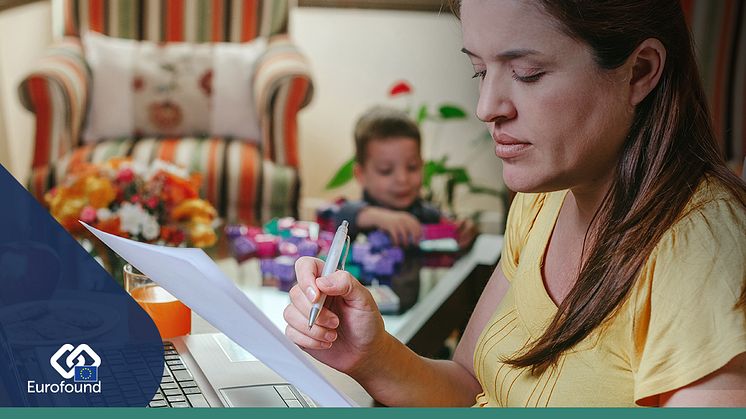
News -
COVID-19 fallout takes a higher toll on women, economically and domestically
While women appear to be more resilient than men to COVID-19 in terms of health outcomes, that is not the case when it comes to the economic and social fallout. Measures taken by governments to control the spread of the virus are exacerbating gender divides in unemployment, domestic labour and financial security, all to the disadvantage of women. Meanwhile, work–life conflict is escalating as people work from home, with mothers of small children often bearing the brunt of the impact. Massimiliano Mascherini, Head of Social studies and Martina Bisello, Research manager, explores.
The imminent downturn in the wake of the lockdowns across Europe is likely to affect women’s job prospects more than men’s, and the first official labour market statistics seem to be a sign of things to come. Eurostat’s monthly unemployment data show that while the male unemployment rate increased from 6.2% in February to 6.3% in March 2020, the increase among women was greater, from 6.7% to 7.0%.
In April 2020, Eurofound conducted a survey across the EU to find out how Europeans were coping with life during the pandemic. This confirmed that a lot of workers who were working from home had never done so before. It also showed that while before the crisis more women (64%) than men (57%) had never teleworked, women had now started to do so to a greater extent: 39% of women compared to 35% of men. And if we take a more granular look, we see that the figure rises to almost half of women with young children (46%).
Pre-pandemic, an increase of women teleworking would have been seen as a positive development, evidence that working time was becoming more flexible and work–life balance improving. But teleworking in a time of social distancing and lockdown is proving to be burdensome for many working mothers as they juggle work, home-schooling and care, all in the same pocket of space and time. Even before the crisis and despite more equal sharing of parenting and housework between the sexes in recent decades, care has continued to be mostly women’s work.






